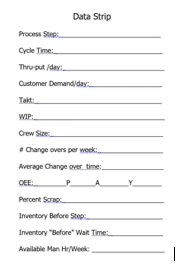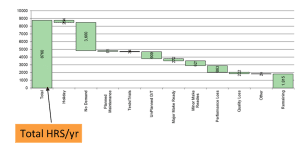Value Stream Mapping
Authors: Lynn Clark & Joe Costello
Recently, I worked with a team who wanted to know what parts of their process were keeping them from achieving the most responsive, most efficient manufacturing plant possible. They had been training their employees and doing several continuous improvement projects and wanted to ensure their efforts were coordinated on the process constraints.
The cross-functional team was key to the success of this event. Their process knowledge expedited the discovery process. Team members represented operations, Continuous Improvement, and finance. Plus, the entire staff at the plant was very helpful and offered information and their perspectives of the process.
We started with the development of a high-level SIPOC of the entire process, including the front end order receipt and production schedule development process. At this point, most of the emphasis was upon the process steps and key inputs.
Next key data for each process step was added. Typical data includes; cycle time, WIP, inventories, performance, availability, yield, crewing size, schedules, etc. This data varies depending upon the types of questions you are trying to answer with the Value Stream Mapping.
All of these inputs were displayed in a single continuous flow with the process steps moving from left to right and the key data posted directly below the process steps. Ancillary support data, such as production schedules, were posted on the wall for easy reference.
- The blue stars represent process improvement opportunities
Data was extracted from various systems and reports. Key data essential form making recommendations was summarized and validated.
- The percent Value Add time of total lead time was calculated
- Most processes have <10% VA
- Capability analysis on inbound and customer requirements was performed to understand process performance
Some data was then reduced to waterfall charts to increase the visibility of the opportunities for each key asset. These opportunities were converted from hours to dollars to help prioritize which improvement concepts merited action.
In this case, the team identified a nominal $2MM of improvement opportunities. Most of those are not single one time projects. It is more likely that they will take a series of improvement efforts very much in the spirit of Toyota’s culture. The value stream map has a shelf life and is only as good as the data from which it was derived. It is commonly recommended that the VSM be revisited every 6 to 12 months to account for the changes common in all businesses.





